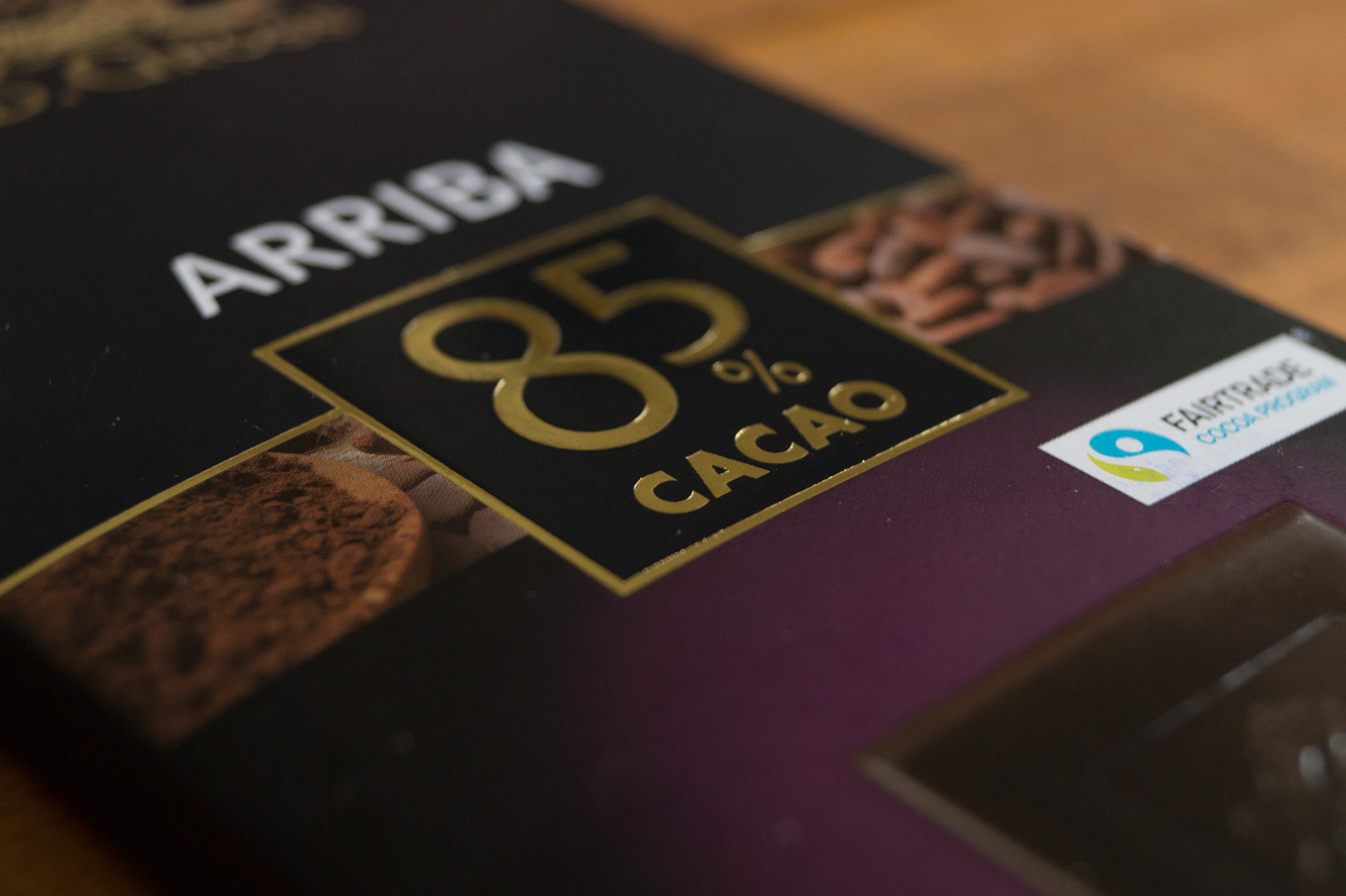Chocolate for diabetics

All you need is love. But a little chocolate now and then doesn’t hurt.
Charles M. Schulz
Other than as a hyposnack, candy is off the menu for diabetics. Chocolate is not, as long as it’s dark enough.
We’ve been having chocolate since the dawn of civilization. Already in 1900 BC the Olmecs in what is modern Mexico were making chocolate beverages. These were brought back to Europe with explorers like Columbus and Cortés during the 16th century. In the years that followed it gained popularity, so much so that in 1662 pope Alexander VII declared that religious fasts were not broken by consuming chocolate drinks.
Chocolate is made from cocoa mixed with fat and sugar. The type of chocolate is classified according to the proportion of cocoa. In 1875 Swiss confectioner Daniel Peter created an early version of milk chocolate. He used condensed milk invented by his neighbor Henri Nestlé, the founder of the food processing company. It was Nestlé that later came up with white chocolate. Unlike milk chocolate, which should have a minimum of 25% cocoa solids, white chocolate is made from the cocoa butter with all the cocoa solids removed. Like chocolate without the chocolate.
Dark chocolate has a higher percentage of cocoa solids and therefore less sugar, which makes it ideal for diabetics. I often buy the Lindt range, which goes from 70% (34g of carbohydrate per 100g) to 99% (8g of carbohydrate per 100g).
As dark chocolate is more bitter and not so sweet you need to train your palate to enjoy it. It’s a good idea to start at 70% and move up. My favorite is the 90% which has only 14g of carbohydrate per 100g. The best thing is that you get your fix from a lot less with the darker stuff, two or three squares does the trick. Milk chocolate, which I used to love, now tastes like sweet butter to me. It’s amazing how your palate changes.